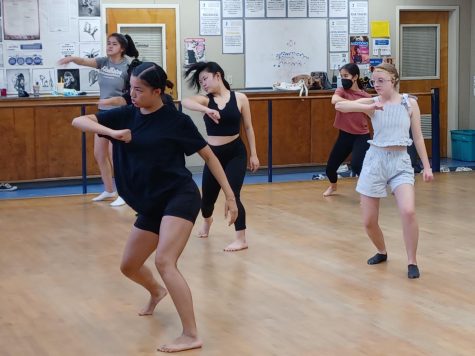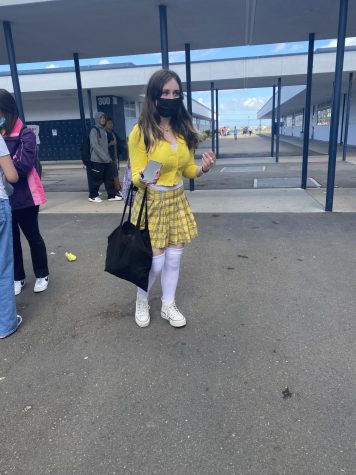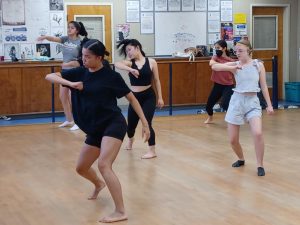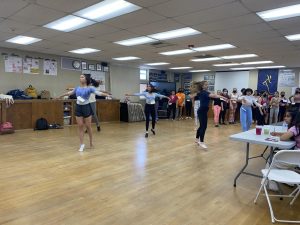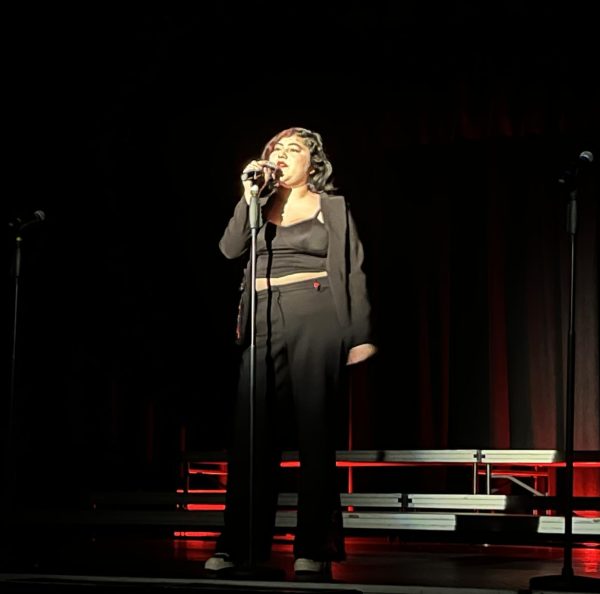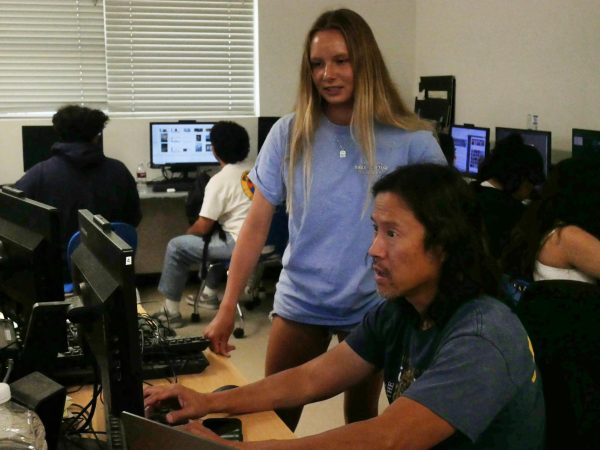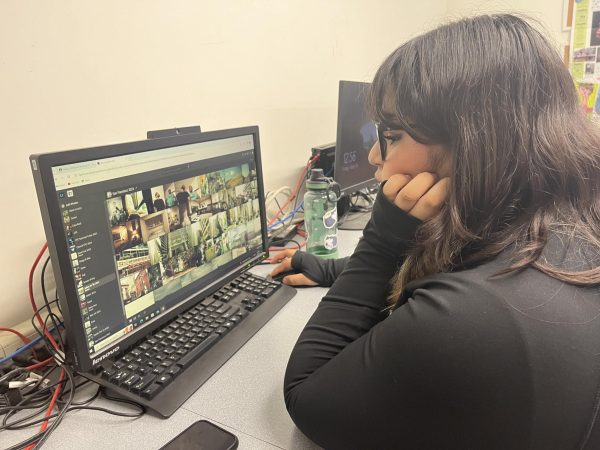A new wave
A look into K-pop’s growing influence
On Dec. 1 2021 K-pop boy group BTS performed at the SoFi Stadium as a part of a series of concerts called BTS Permission to Dance on Stage – LA. Many fans brought with them lightsticks which coordinated with the lighting effects of the group’s performance.
July 15, 2022
Since 2022, the popularity of Korean pop (K-pop) has been on the rise. During quarantine, students at Bonita Vista High, like junior Kian Torres, were able to discover the genre of K-pop through mediums such as TikTok and find out more about it.
“In the middle of my sophomore year, during COVID-19, it was kind of depressing. I needed something to make me feel better because I felt sad. There [was] no one to talk to. But then [K-pop] kind of came up and made me happier,” junior Kian Torres said.
According to Torres, during times of struggle amidst the pandemic, he listened to K-pop music to make himself feel better. Torres explains that K-pop, specifically the choreography, acts like Autonomous Sensory Meridian Response (ASMR) to his eyes.
“I like how they dance and the type of dances they do. I think I like a group because of their dances. I don’t really care about the visuals,” Torres said. Just give it a try. I feel like you need to watch the music videos to understand why people like them. — Junior Kian Torres
Although people may not understand the Korean language, senior Renata Araiza believes that the beat and the genre makes up for it. K-pop could be differentiated when compared to Western styled music through the background and the beat.
“[K-pop] experiments a lot with different genres and beats. They make a lot of music that you don’t hear in the West. It’s different. People are scared of things that are different, and that’s why a lot of people don’t like K-pop, but I am all for it,” Araiza said.
Despite multiple genres present in K-pop, there are more genres and themes to be expected in the future. K-pop can be unexpected as there are countless groups arranging a unique style of comeback— when an artist releases a new album—and genre of music.
“I don’t know. I’m always changing, so I never know what I’m going to expect from a new comeback or a new group debuting. I think because of their willingness to try different things and be a little adventurous keeps me invested,” senior Regina Luna said.
Luna mentioned that she enjoyed listening to Bangtan Sonyeondan (BTS)—a K-pop boy band consisting of seven members, RM, Jin, Suga, J-Hope, Jimin, V and Jungkook. She believes that it is easier to listen to music from a group she is familiar with.
“It’s hard to get into each [K-pop group], especially from an outside point of view where some of [the groups] are still getting into controversy. I don’t want to get too invested because what if they get called out? I don’t want to deal with that. I usually [stick] with them because I’m able to choose which songs I’d like from them easily,” Luna said.
Not only are listeners attracted to the genre of music and the music videos, they can also be attracted to the dance style. Unlike western music, K-pop incorporates dance along with their music. From hit song’s choreography such as “I Can’t Stop Me” by TWICE and “God’s Menu” by Stray Kids, there are an endless amount of songs to choose to learn the choreography to.
“Learning the dances was something that kept me going, where I would listen to [a song] and be like, ‘Oh I know this dance.’ I love this. I think the whole concept of [the K-pop artists] being able to sing and dance at the same time, definitely adds a layer of interest because I might hate a song but the dance is really cool. So I’ll watch the practice video over and over again,” Luna said.
Like K-pop, some Western music have dance moves incorporated in their music video. However, Torres believes that dances featured in K-pop music videos are more challenging to learn.
“Compared to dances to regular pop dances, K-pop [looks] more difficult. It’s a different level of rigor compared to the pop culture that we’re used to in the United States. And personally, it’s more satisfying to learn it and watch it when you’re listening to K-pop,” Torres said.
Although there are people in the world who enjoy listening to K-pop, there are also those who dislike it. Araiza explains how she does not want to play K-pop when given the opportunity to play music.
“I don’t like [it] when [people] pass me the aux. If you’re going to party, it’s sometimes so cringe when they play Kpop at a certain place. Then you have people that are like, ‘Oh my god, they’re playing Korean music.’ No one wants to listen to that. You don’t have to say that out loud,” Araiza said.
On the other hand, Luna believes that people might be ignorant towards Korean music due to the difference of races.
“In general, [there are] hate towards Koreans and Asians, where [people will] avoid [K-pop] because they’re Korean. I have an issue with that because you didn’t even try to listen to the music. You have an issue with the people, and that’s weird,” Luna said.
Despite the fact that people may not enjoy listening to K-pop or the idea of K-pop, Torres believes that people should give new music tastes a try. To get a more appealing look he recommends the audience to watch the K-pop music videos along with listening to it.
“Just give it a try. I feel like you need to watch the music videos to understand why people like them,” Torres said.


